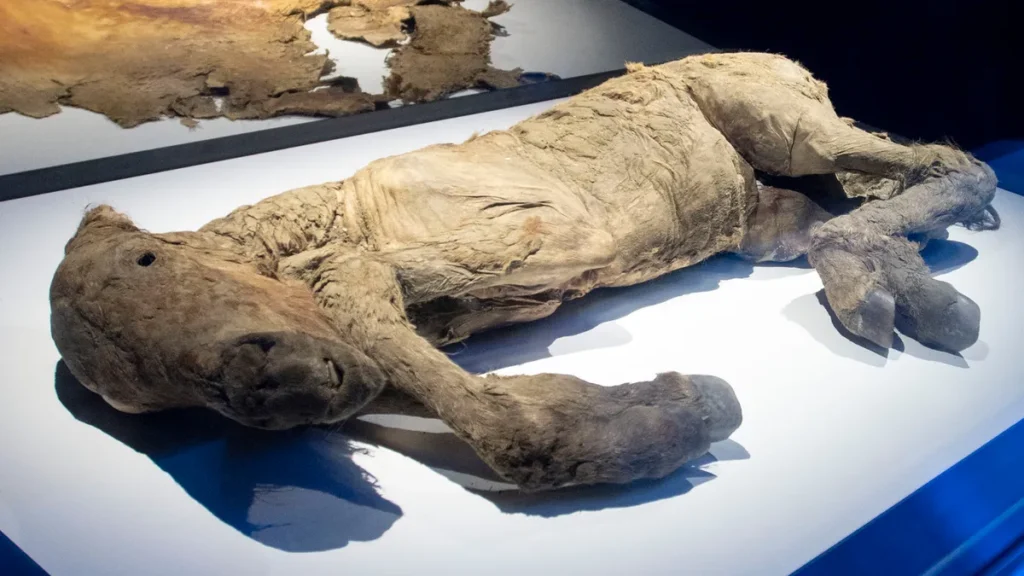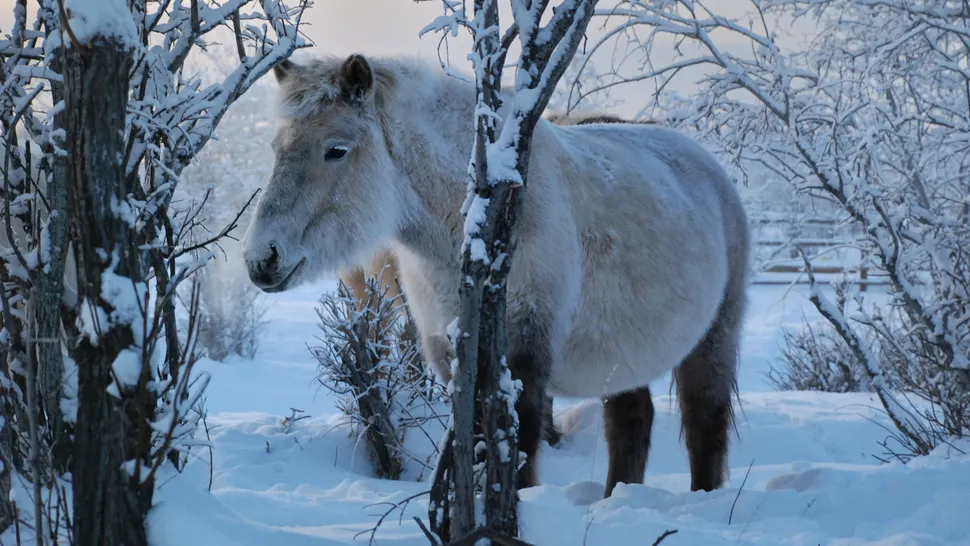🐎 Frozen Foal Discovery in Siberia Reveals the Genetic Origins of the Yakutian Horse
Meta Title: Frozen Siberian Horse Unlocks Genetic Secrets of the Yakutian Horse
Meta Description: A 42,000-year-old foal found in Siberian permafrost has helped scientists uncover the ancient origins and unique adaptations of the Yakutian horse.
Slug: yakutian-horse-genetics-siberia-batagay-discovery

A Perfectly Preserved Foal Emerges From Siberia’s Permafrost
In 2018, researchers uncovered a perfectly preserved foal from the Siberian permafrost — a find that stunned scientists and horse enthusiasts alike. The discovery, along with another ancient horse from the Batagay Crater, provided vital genetic evidence explaining how Yakutian horses, known for their thick coats and cold resistance, came to thrive in one of the harshest environments on Earth.
The Batagay Crater, nicknamed the “gateway to the underworld,” lies more than 370 miles (600 km) north of Yakutsk. The massive depression — now over 320 feet deep and nearly a kilometer long — formed in the 1960s when deforestation triggered rapid permafrost thaw. As the crater expands, it exposes the frozen remains of Ice Age animals, offering scientists a unique glimpse into prehistoric life.
The Lena Horse: A Window Into the Ice Age
One of the most remarkable discoveries from Batagay was a 42,000-year-old foal, later named the Lena horse. Its hair, skin, and features were so well-preserved that it appeared almost lifelike.
Though the foal’s DNA was not personally studied by geneticist Ludovic Orlando, his team analyzed another specimen from Batagay — a male horse whose genome was nearly perfectly intact. Radiocarbon dating revealed the animal lived about 5,200 years ago, around the same time as the Botai horses, among the first known domesticated horses.

Yet genetically, the Batagay specimen shared little with the Botai lineage or the modern domestic horse (known as DOM2), whose global spread began roughly a millennium later. Instead, it descended directly from Equus lenensis, the extinct Lena horse, making it the last known representative of that ancient lineage.
From Ancient Ice to Modern Tundra: The Yakutian Horse
Local legends in Yakutia suggest that modern horses are the descendants of wild Ice Age populations domesticated in the region thousands of years ago. To test this, Orlando’s team sequenced the genomes of contemporary Yakutian horses, using samples provided by Russian biologist Andrei Tikhonov.
The Yakutian horse is small and muscular, with dense winter fur and a unique ability to slow its metabolism during freezing temperatures — surviving in conditions that would kill most domestic breeds. These horses roam the taiga and tundra in semi-wild herds, gathered only once a year.
When compared with 19th-century archaeological horse remains from Yakutian gravesites, researchers found no genetic overlap with the ancient Batagay horses. Instead, modern Yakutians belong to the DOM2 lineage, which originated in the western Russian steppes around 4,200 years ago.
The Arrival of the Yakutian Horse People
Historical and genetic evidence aligns: the Yakut people and their horses likely arrived in northern Siberia in the 13th century A.D., migrating northward from south of Lake Baikal as Genghis Khan’s armies expanded.
These migrants brought domesticated horses, which became central to Yakutian life — providing transportation, food, clothing, and cultural identity. In the Republic of Sakha (Yakutia), the horse remains a national symbol, celebrated in art, song, and legend.
Did the Yakutian Horse Inherit Ice Age Genes?
Scientists considered whether ancient Lena horses might have interbred with the early domesticated horses that arrived in Yakutia, passing along traits for cold resistance — similar to how modern humans retain traces of Neanderthal DNA.
However, genetic analyses refuted this idea. Modern and historical Yakutian horses show no significant traces of Equus lenensis DNA, suggesting the Ice Age horses had already vanished before domesticated breeds arrived.
Still, natural selection worked quickly: the early Yakutian horses carried enough genetic diversity to adapt to extreme Siberian winters over the following centuries.
Evolution Through Adaptation: Shared Genes Across Species
The genetic toolkit that makes the Yakutian horse so resilient includes adaptations related to fur growth, fat storage, sugar metabolism, and circadian rhythm regulation. Interestingly, many of these same genes appear in other Arctic species, such as woolly mammoths — and even humans who adapted to Siberian climates.
This phenomenon, known as evolutionary convergence, shows how diverse species independently develop similar genetic solutions to shared environmental challenges.
A Legacy Written in Ice and DNA
The discovery of the frozen Batagay horses not only illuminates the deep evolutionary history of the Yakutian horse, but also highlights the dynamic interplay between climate, environment, and genetic adaptation.
From Ice Age tundra to modern taiga, the story of the Yakutian horse spans tens of thousands of years — a living symbol of resilience and evolution in one of the coldest inhabited places on Earth.
